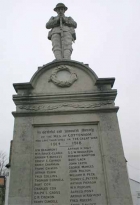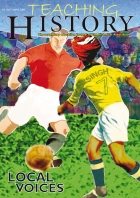Historic Environment
Schools that are already teaching SHP will be familiar with the concept of a local History study, unlike their Modern World counterparts. However, the new GCSE is significantly different from what has gone before, as the unit will be assessed by terminal assessment and for most assessment bodies the site will be selected for schools. So, how can we embrace the opportunities offered by this study of the historic environment? Firstly, it is worth comparing how the examining bodies have designed this module. Each exam body has different assessment focuses and freedom of choice. It may also call for a re-evaluation of how your school teaches at Key Stage 3. What skills do you want to embed?
Sort by:
Date (Newest first) | Title A-Z
Show:
All |
Articles |
Podcasts |
Multipage Articles
-

Relevant, rigorous and revisited: using local history to make meaning of historical significance
ArticleClick to view -

Teaching History 134: Local Voices
ArticleClick to view -

'Right well kept': Peterborough Abbey 1536-1539
ArticleClick to view -

Cunning Plan 108: teaching Tudor architecture
ArticleClick to view -

Telling and suggesting in the Conwy Valley
ArticleClick to view

